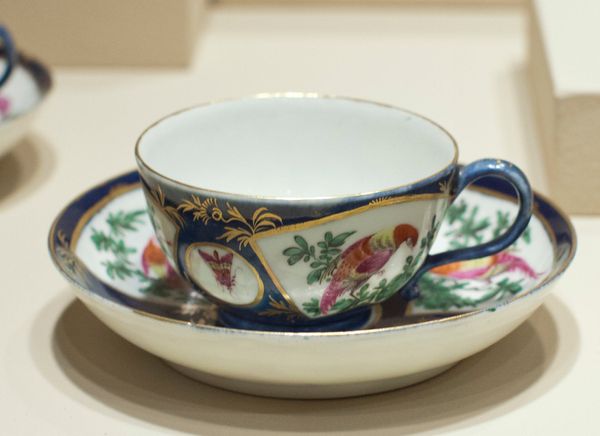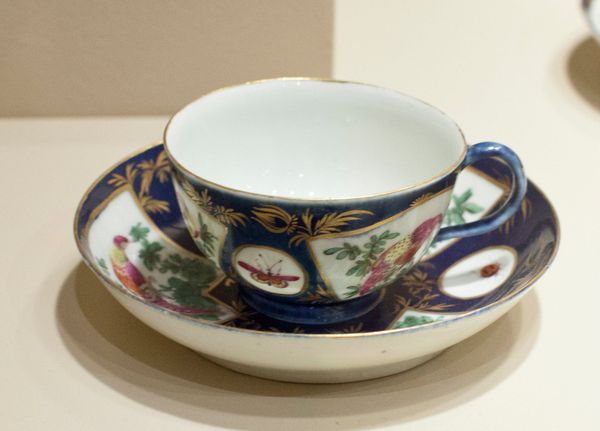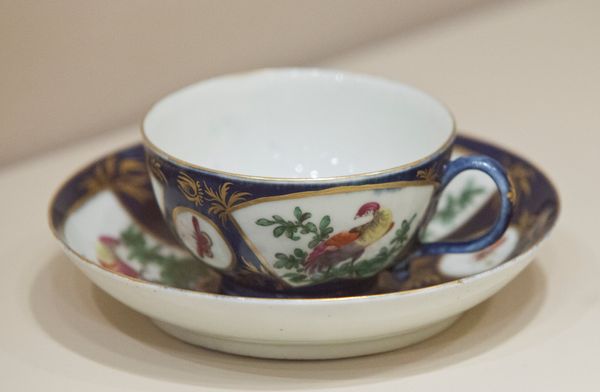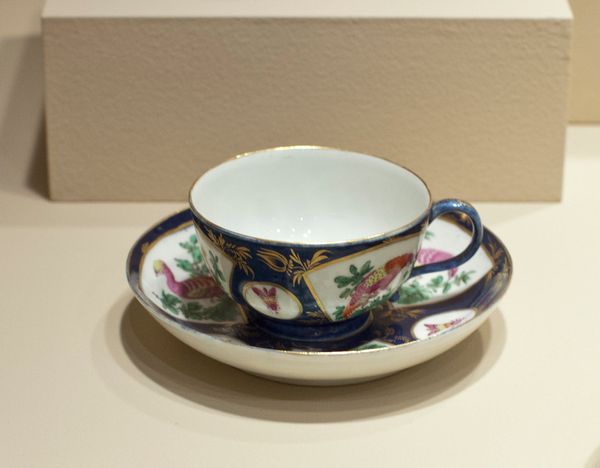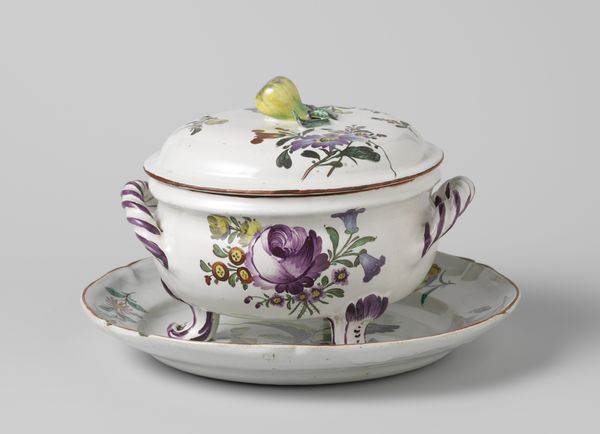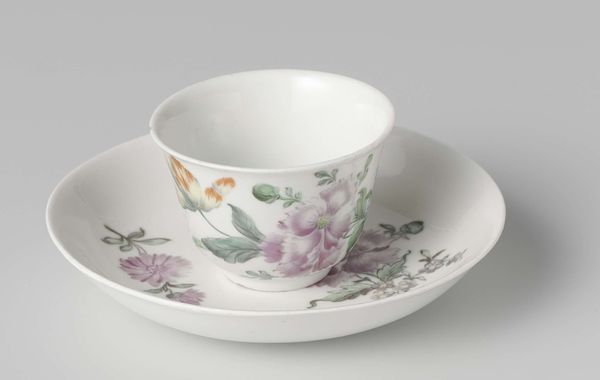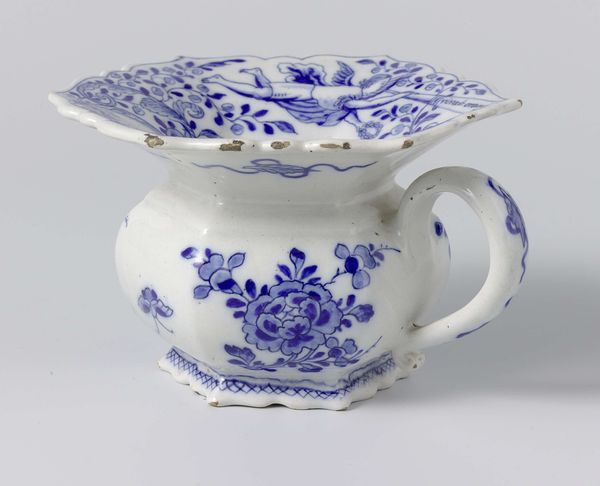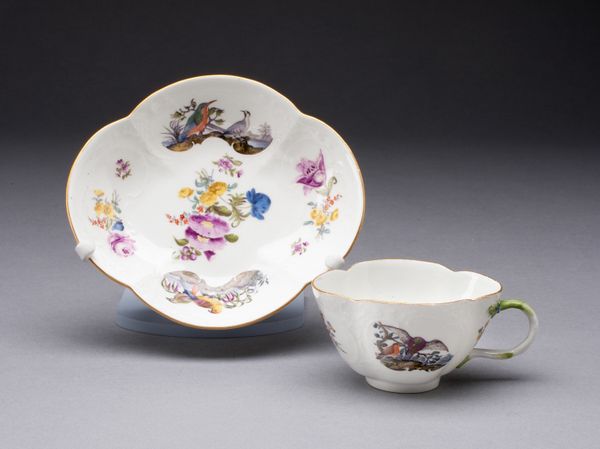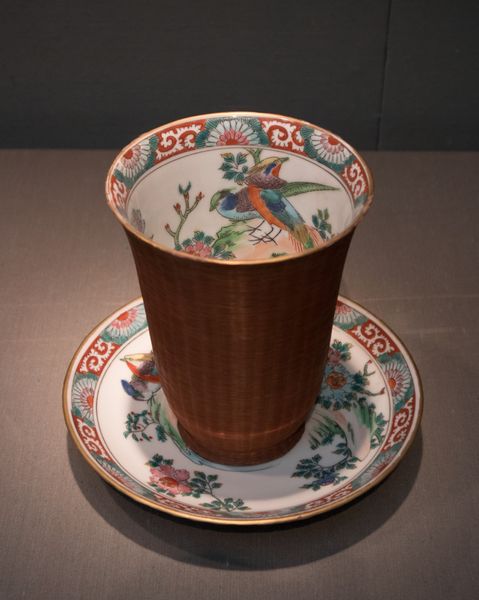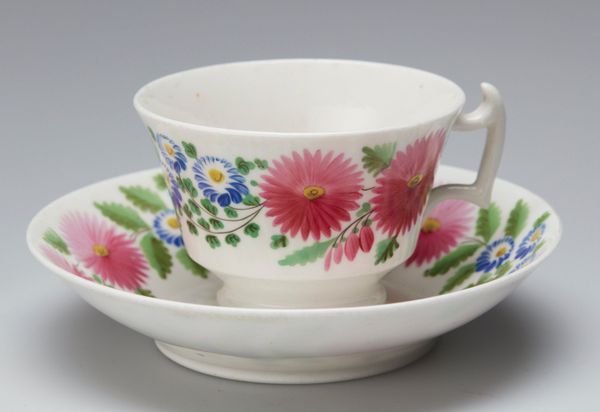
Tea Cup and Saucer 1765 - 1770
0:00
0:00
ceramic, porcelain, earthenware
#
pottery
#
ceramic
#
porcelain
#
earthenware
#
england
#
ceramic
#
earthenware
#
rococo
Dimensions: 1 3/4 x 3 3/16 x 3 7/8 in. (4.45 x 8.1 x 9.84 cm) (a) - (cup)
Copyright: Public Domain
Editor: Here we have a “Tea Cup and Saucer” made by the Worcester Porcelain Works around 1765 to 1770. It's crafted from porcelain, a type of ceramic, and is currently held at the Minneapolis Institute of Art. I'm struck by how delicate the painting is, and the asymmetry feels quite intentional. How do you approach looking at something like this? Curator: The piece presents a fascinating study in Rococo aesthetics, doesn't it? Consider the cup’s contours. The undulating lines, particularly where the handle joins the body, are vital to this aesthetic. The eye is guided by these curves and the repetition in the saucer’s edge, reinforcing a sense of dynamic movement. Note how the panels depicting birds and floral arrangements are framed. Editor: Yes, those framed vignettes. Curator: Exactly. The framing, delineated with gold leaf filigree, introduces a contained space separate from the rest of the object, acting like mini canvases on a 3D form. What compositional relationships do you observe? Editor: Well, the color palette seems intentionally restrained. The deep blue and white provide contrast, while the pinks and greens in the birds and flowers add visual interest without overwhelming the overall design. The cup shape is also particularly angular, giving an octagonal cross section. Curator: Precisely. The structure is also informed by function: the shape affects how light interacts with the surface, modulating how the decorative motifs are perceived. Consider what we gain when understanding the interplay of color, line, and form within this work? Editor: I see what you mean. It's easy to overlook these details when you see a teacup. The strict formality pushes you to appreciate the craftsmanship rather than just seeing an everyday object. Curator: Indeed, we are considering an object where formal composition and utility merge, which enriches our understanding of the artist’s intention. I appreciate your insightful reading.
Comments
No comments
Be the first to comment and join the conversation on the ultimate creative platform.
